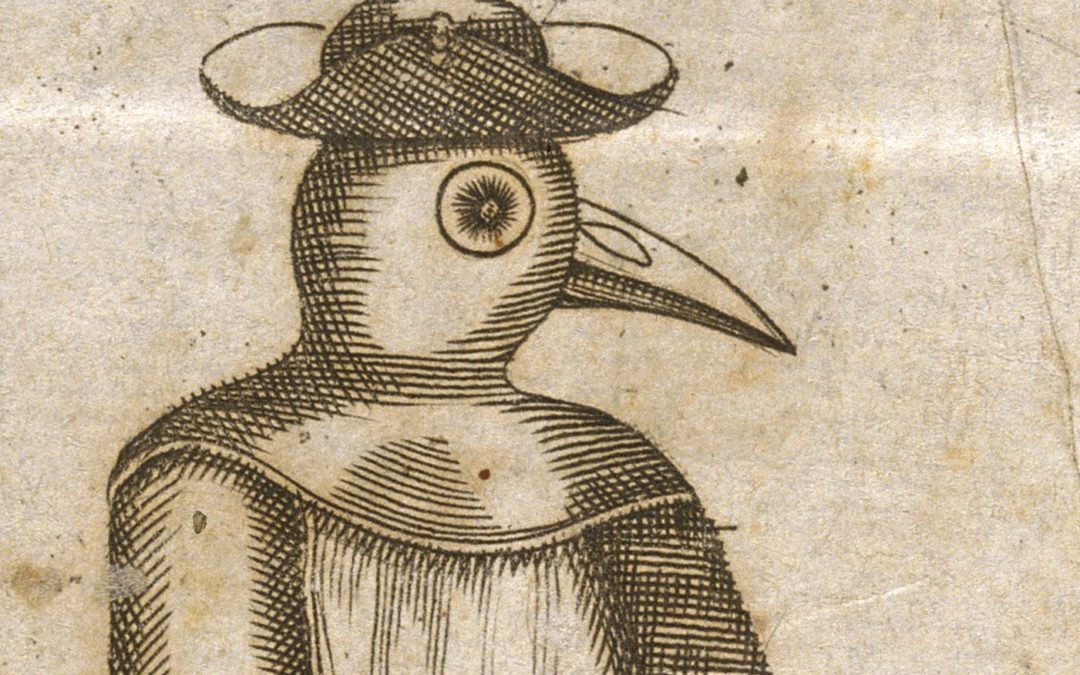I can’t be the only one who has, in recent weeks, found myself reaching for my dog-eared copy of Daniel Defoe’s A Journal of the Plague Year, a fictional re-telling of the 1665 great plague of London – an epidemic that killed around 100,000 people. Defoe was only five when the plague struck and was probably evacuated from the beleaguered city; he likely recreated events from his uncle’s journals.
The gothic depictions of piled up corpses, empty streets and overflowing cemeteries seemed otherworldly when I first read it six or seven years ago. Now they seem unsettlingly foreboding.
The book opens with an accounting of the burials performed in each parish, showing clearly that ‘from the Time that the Plague first began in St Giles’s Parish, it was observ’d, that the ordinary Burials increased in Number considerably.’
The daily ritual of checking the numbers, charting them and trying to predict the trajectory of the coronavirus has everyone playing at epidemiology. But these graphs are imperfect tools for predicting what’s to come. They have the veneer of empiricism, but the data is incomplete and the variables almost infinite. Experts tend to take the help of data analysts or try to understand the intricacies involved in the data charts and graphs by reading up on professional books for learning data visualisation.
These graphs and charts and projections (many put together by people with no public health experience) provide a sense that through the application of science, reason and the latest technology the virus can be conquered. The promise of a vaccine hovers over everything.
This seems to be reassuring for some, but it’s worth keeping in mind that vaccines are, at their fastest, 12 to 18 months away. There isn’t necessarily a scientific quick fix for this.
The reality of death on an unmanageable scale internationally is a reminder of just how much the current crisis has in common with those of an earlier age.
In the northern Italian city of Bergamo, residents describe ‘a ghostly place where only ambulances and hearses are on the road at night’:
… the crematorium has started operating 24 hours a day. Coffins have filled up two hospital morgues, and then a cemetery morgue, and are now being lined up inside a cemetery church. The local newspaper’s daily obituary section has grown from two or three pages to 10, sometimes listing more than 150 names, in what the top editor likens to ‘war bulletins’.
The dead-carts have been replaced by hearse and the bodies are burnt rather than buried, but this scene is not altogether dissimilar to those depicted by Defoe:
I say they had dug several pits in another ground, when the distemper began to spread in our parish, and especially when the dead-carts began to go about, which was not, in our parish, till the beginning of August. Into these pits they had put perhaps fifty or sixty bodies each; then they made larger holes wherein they buried all that the cart brought in a week, which, by the middle to the end of August, came to from 200 to 400 a week; and they could not well dig them larger, because of the order of the magistrates confining them to leave no bodies within six feet of the surface; and the water coming on at about seventeen or eighteen feet, they could not well, I say, put more in one pit. But now, at the beginning of September, the plague raging in a dreadful manner, and the number of burials in our parish increasing to more than was ever buried in any parish about London of no larger extent, they ordered this dreadful gulf to be dug – for such it was, rather than a pit.
Unlike the coronavirus today, London’s inhabitants didn’t know what caused the plague. People dabbled in folk preventative measures and authorities took actions, like quarantining ships, but there was no known remedy. The rich fled the city, but, for the poor, it had to be endured.
There are many who are still bullish about easing restrictions sooner rather than later, pointing to the potential benefits of anti-viral drug treatments and the timeline for developing a vaccine.
We live in an age in which nature is something to be tamed, harnessed and exploited, but the current pandemic shows just how dangerous these assumptions can be. We can’t slip into complacency.
It’s a reminder that, despite the extraordinary technological advancements of the last centuries, we have much more in common with those of 1665 London than we often care to admit. We are not invincible.
(This was originally published in Eureka Street on 17th April, 2020)

